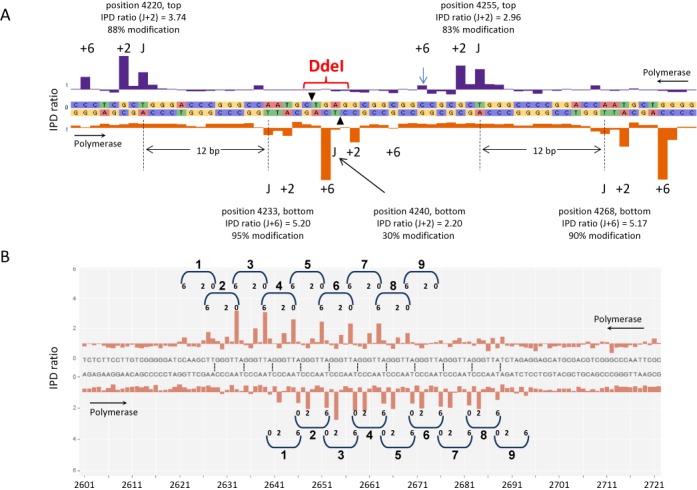Figure 5.

Zoom-ins of the SMRT sequencing results of the 25.2L and the telomeric repeat plasmid showing the characteristics of the J modification. (A) For the plasmid 25.2L presented in Figures 2 and 4 the region 4212 to 4270 from 25.2L is presented as in Figure 4. The typical 0, 2, 6 signature due to pausing of the DNA polymerase when passing J is seen as well the presence of couples of J modifications with one J modification on one strand and another J modification at +13 on the other strand. The estimated percentage of individual molecules contain the modification is indicated. There is a J-singlet in a DdeI site with a relative low level of modification which explains the partial digestion of this site (see also Supplementary Data). (B) SMRT sequencing of the telomeric repeat plasmid. The plasmid containing 10 copies of the telomeric GGGTTA repeat was grown in L. tarentolae, purified and sequenced using the SMRT technology. A base-resolution view of the region with the telomeric repeats based on pooling SMRT sequencing of individual molecules. The IPD ratio for each position on the top and bottom strand is plotted. The J signal has a typical 0, 2, 6 signature due to pausing of the DNA polymerase when passing J and J is present in couples with a J modification on one strand and another J modification at +13 (or +12 in case of couple 1) on the other strand.
